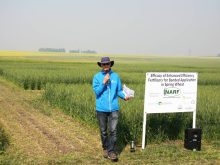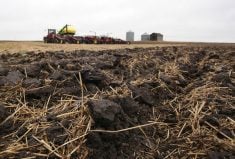WINNIPEG — In November 2021, Canada’s agriculture minister and provincial agriculture ministers made an announcement that, at the time, seemed like just one more in the usual stream of announcements.
It wasn’t.
Other stories in this Special Report:
- Research priorities breed frustration, confusion
- Ottawa’s approach to ag research called ‘narrow-minded’
- Emissions focus worries ag sector
- New focus called gov’t blind spot
- More clarity urged for ag research requests
The leaders were in Guelph, Ont., to finalize negotiations for the next federal-provincial funding partnership to support Canada’s ag industry. At that meeting, the ministers agreed to the Guelph Statement, which committed the feds and provinces to a new vision for Canadian agriculture.
Read Also

Farmers asked to keep an eye out for space junk
Farmers and landowners east of Saskatoon are asked to watch for possible debris in their fields after the re-entry of a satellite in late September.
The first priority in the Guelph Statement, which can be found here, is about climate change and emissions and commits to “tackling climate change and environmental protection to support GHG emission reductions and the long-term vitality of the sector while positioning producers and processors to seize economic opportunities from evolving consumer demands.”
That priority was a distinct shift from the previous Canadian Agricultural Partnership between the provinces and the feds, which started in 2018 and ended in 2023. The new agreement, called the Sustainable Canadian Agricultural Partnership (SCAP), twisted the dial toward climate, particularly for research funding.
“Historically, in AgriScience Clusters, relatively small investments were made in research related to climate change and the environment. For example, under the Canadian Agricultural Partnership (2018-2023), only limited Cluster investments had environmental benefits, and rarely as the primary focus,” Agriculture Canada said in an email to The Western Producer.
“This is why under (SCAP) a minimum of 30 per cent of the overall AgriScience Cluster costs must be geared towards activities that focus primarily on the environment — of which 15 per cent of the overall Cluster costs must address GHG emissions.”
That new requirement, where 30 percent of dollars must go toward the environment and climate, has transformed agricultural research funding and altered activities at universities and Agriculture Canada stations across the country.
In a special report in this week’s issue, reporters Ed White and Robert Arnason look at the fallout from the Guelph statement and why many farm groups say agricultural research funding should be spent on agronomic research that improves productivity, efficiency and sustainability, without a narrow focus on climate change.


















